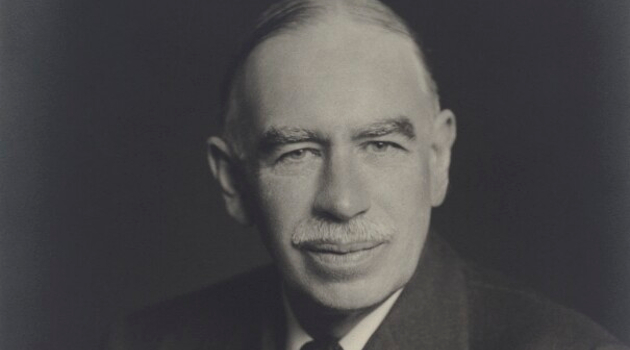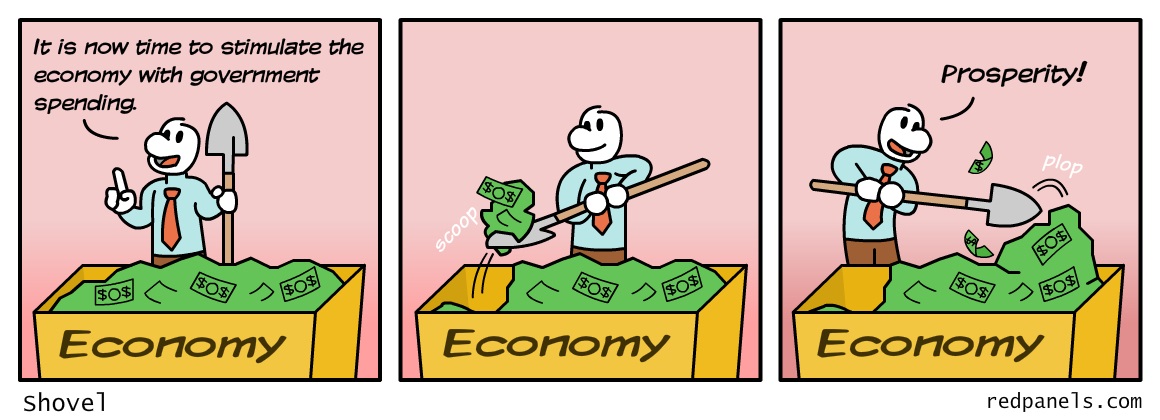The private sector reacted quickly (when allowed by sluggish and inefficient government) to the coronavirus pandemic. We quickly got everything from vaccines to personal protective equipment.
That’s the good news.
The bad news is that politicians also reacted quickly.
The crowd in Washington used the crisis as an excuse to spend money. Lots of money.
This predictably led to lots of waste, fraud, and abuse.
But did it also help the economy? In other words, did the pandemic spending “stimulate” the private sector, as Keynesian economists have long claimed?
In a new study, Veronique de Rugy of the Mercatus Center and Professor Garett Jones of George Mason University examined whether government spending has a “multiplier effect” that leads to additional prosperity.
Here’s the issue they investigated.
Since March 2020, Congress and two successive administrations have passed and signed into law five COVID-19 pandemic relief bailouts… That adds up to almost $6 trillion in “emergency” federal spending… designed to save jobs that would have been lost or create jobs that would have gone uncreated otherwise. …this perspective fails to acknowledge the limits that this type of government intervention has in achieving the goal of pulling the economy out of recession. …According to the best available evidence, there are no realistic scenarios where the short-term benefit of stimulus is so large that the government spending pays for itself. In fact, even when government spending crowds in some private-sector activity, the positive impact is small, and much smaller than economic textbooks suggest. …the COVID-19 recession was driven by supply constraints on growth, not a lack of aggregate demand. …Both history and Keynesian-influenced economic theory teach that extra government spending per se cannot do much to overcome the effects of a supply shock.
And here are some of their conclusions.
The possibility that higher government spending, rather than increasing the size of the private sector, results in the private sector shrinking, is often omitted from the Keynesian theories that students learn in textbooks. Nevertheless, this kind of result turns up routinely in recent data-driven research. …evidence from the past few decades has seriously weakened (though not entirely defeated) the argument that expanding the government is a path to growing the private sector. …The outpouring of academic interest into Keynesian fiscal multipliers has ultimately led researchers to the view that those effects are even smaller than earlier supposed. …So even during recessions, even during times of high unemployment, high-quality statistical analysis of US economic history shows that extra government spending shrinks the private sector, at least a little. …The Keynesian idea that short-term government spending can reboot a crashed economy has not proven useful. …it is more like a myth.
And it’s a myth with a history of failure in the real world.
- It didn’t work for Hoover.
- It didn’t work for Roosevelt.
- It didn’t work for Japan.
- It didn’t work for Europe.
- It didn’t work for Obama.
It’s also worth pointing out that Keynesians have been consistently wrong with predicting economic damage during periods of spending restraint.
- They were wrong about growth after World War II (and would have been wrong, if they were around at the time, about growth when Harding slashed spending in the early 1920s).
- They were wrong about Thatcher in the 1980s.
- They were wrong about Reagan in the 1980s.
- They were wrong about Canada in the 1990s.
- They were wrong after the sequester in 2013.
- They were wrong about unemployment benefits in 2020.
———
Image credit: National Portrait Gallery | CC BY-NC-ND 3.0.



